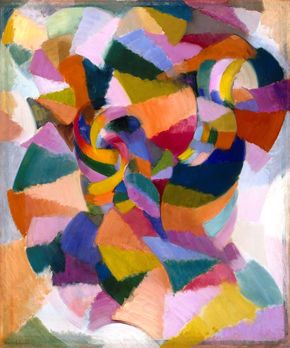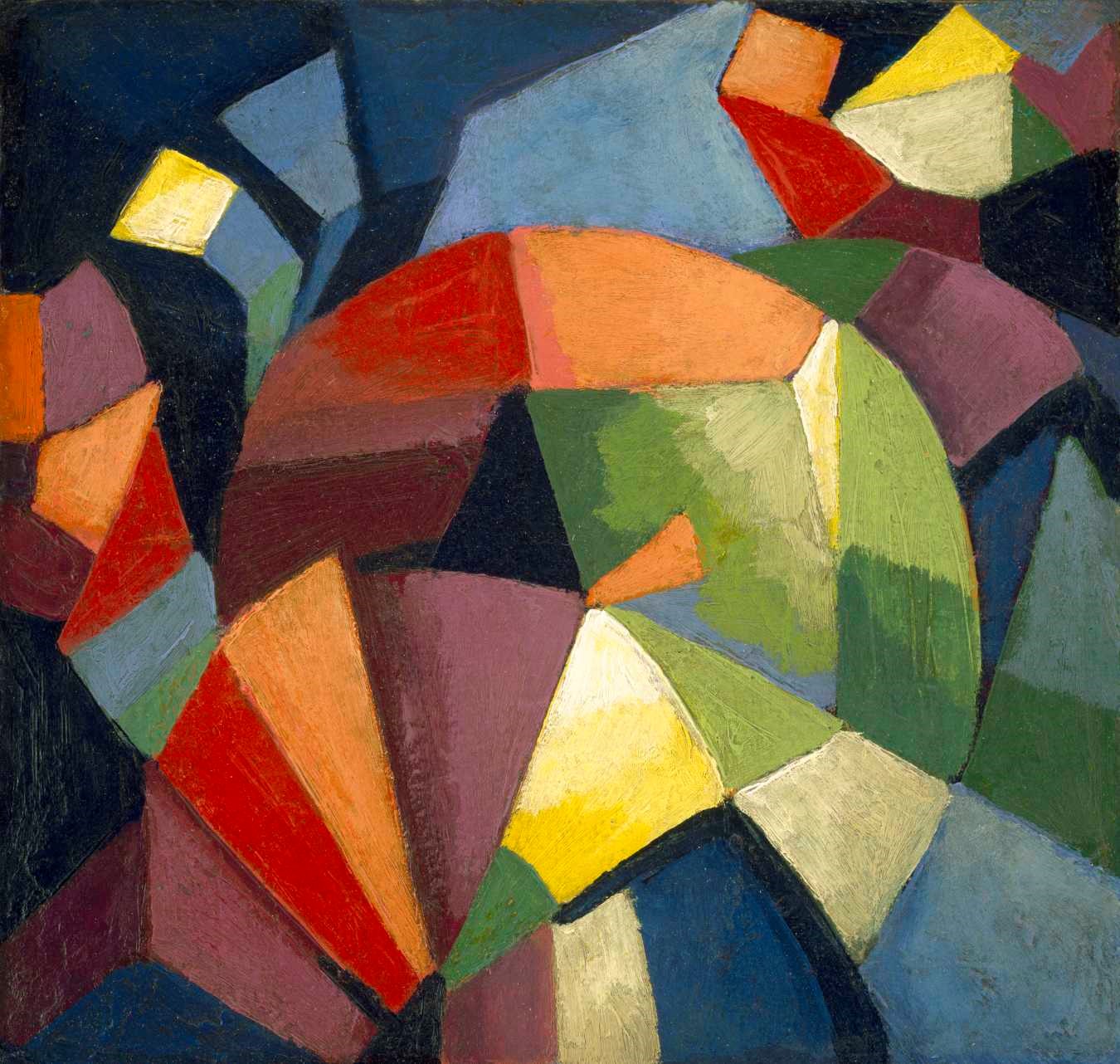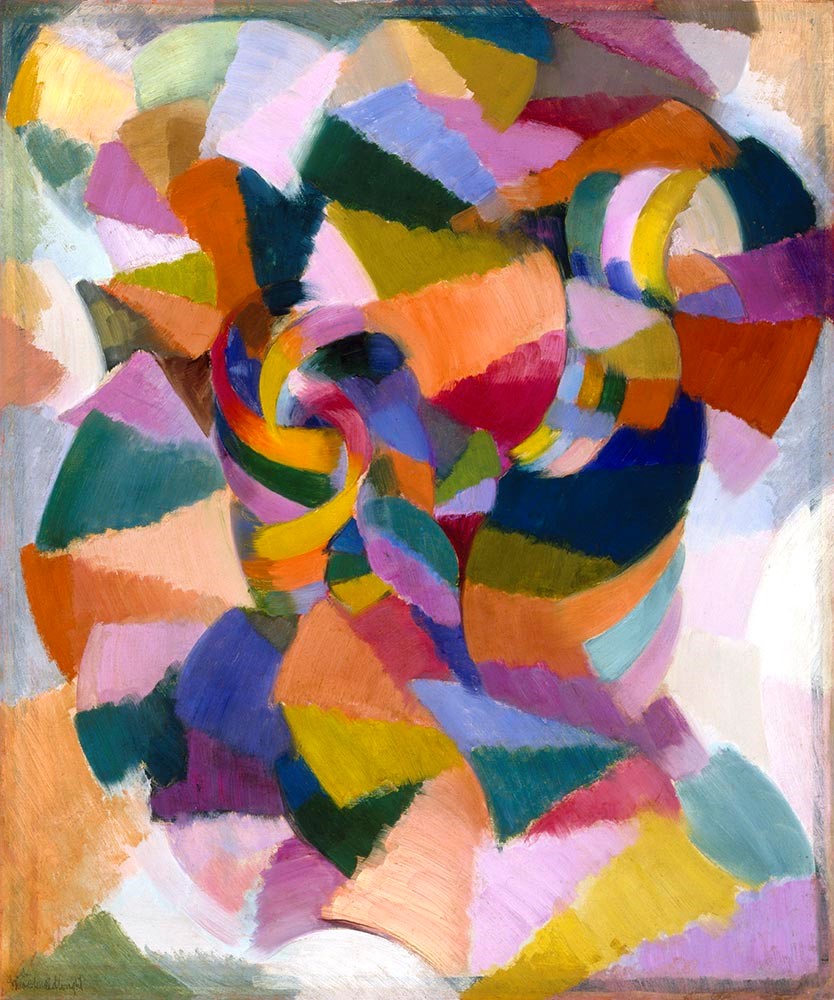Symphonies of Color July 19, 2019

Stanton Macdonald-Wright, Arm Organization, 1914, oil on canvas, the Museum of Fine Arts, Houston, Museum purchase. © Estate of Jean Macdonald-Wright
Morgan Russell, Synchromy, c. 1914, oil on composition board, the Museum of Fine Arts, Houston, Museum purchase. © Jean-Pierre Joyce
In 1913, Stanton Macdonald-Wright and Morgan Russell, two American expatriate artists living in Paris, introduced a new mode of abstraction they called Synchromism. Their conception of the term, and the rhythmic, pulsating colors and forms that comprised their canvases, were rooted in music.
As Macdonald-Wright explained, “Synchromism meant ‘with color,’ just as symphony means ‘with sound,’ and our idea was to produce an art whose genesis lay, not in objectivity, but in form produced in color.”
Color as Sound
Influenced by the work of Paul Cézanne and Henri Matisse, as well as by Cubism, Synchromism approached color as a composer or musician would approach sound—by creating complementary “chords” of colors as an organizing principle within an abstract composition—with the goal of producing a visceral, nonverbal, or even spiritual response that transcended the physical.
Color as Rhythm
In Synchromy (below), Russell arranged brilliant, subtly modulated colors and varying shapes in an almost concentric pattern to achieve color rhythms that activate the composition, injecting a virtual pulse or beat into an expression that, if handled any differently, might have been static, “quiet,” or still.

Macdonald-Wright’s Arm Organization (below) similarly pulsates, and the arrangement of vivid, often saturated colors suggests an even more rapid beat, as the eye moves swiftly from color to color and shape to shape.

Color as Theory
But Macdonald-Wright and his colleague Russell, who also established themselves as theorists of art and especially color with their writings and Synchromism manifestos, argued that artists should look to the example of music in order to achieve with their creations more transcendent experiences: “Mankind has until now always tried to satisfy its need for the highest spiritual exaltation only in music. Only [musical] tones have been able to . . . transport us to the highest realms. . . . Yet color is just as capable as music of providing us with the highest ecstasies and delights.”
► Find out more about Arm Organization, Synchromy, and other MFAH works of art: Search the collections.





